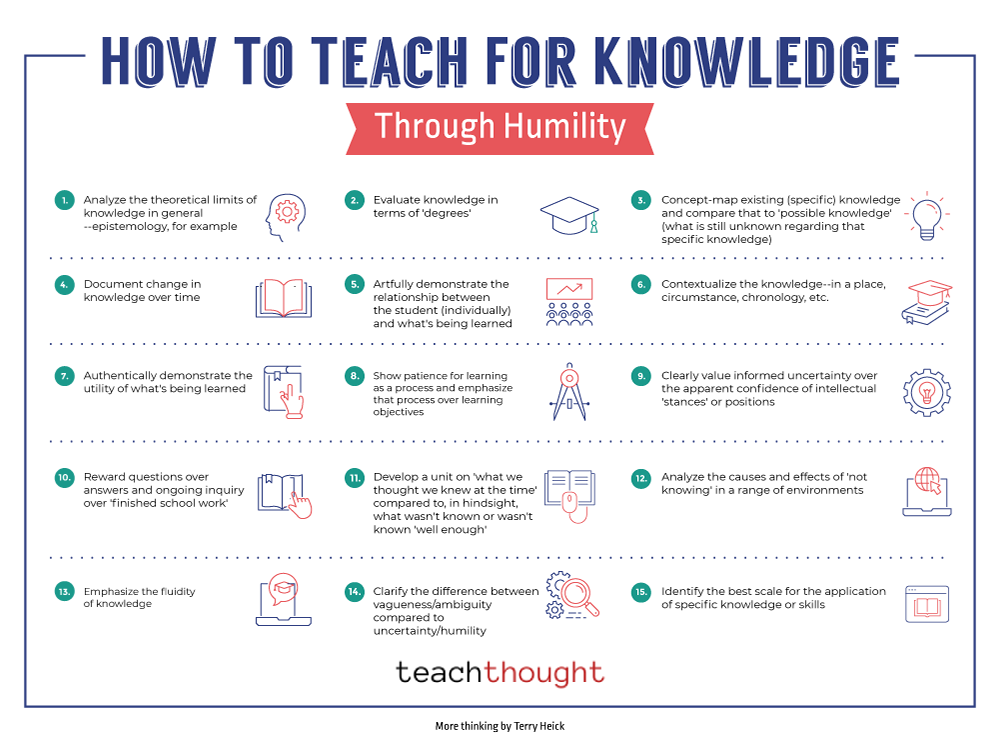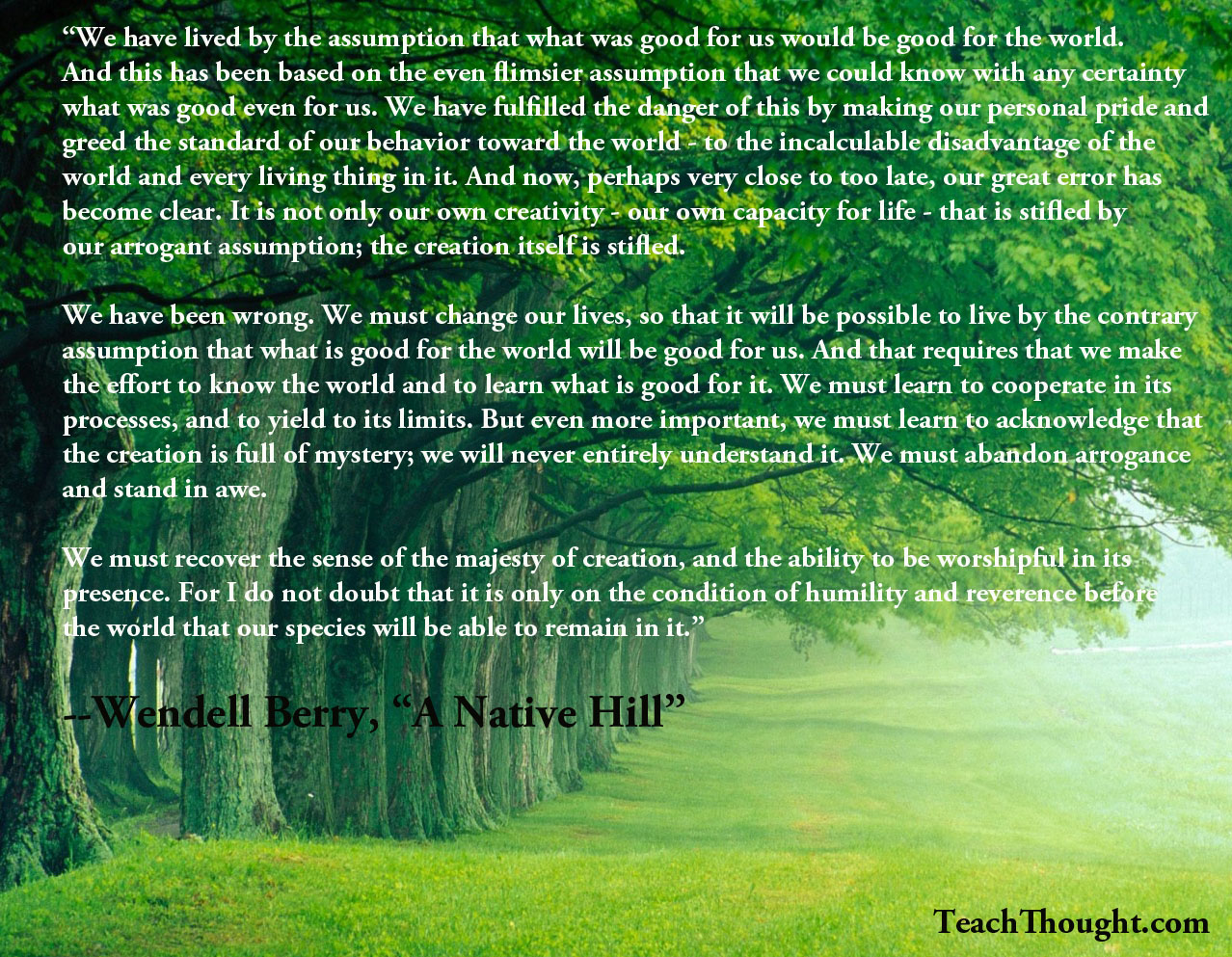

by Terry Heick
Humility is an interesting beginning factor for knowing.
In an era of media that is digital, social, chopped up, and constantly recirculated, the challenge is no more gain access to but the high quality of accessibility– and the response to then evaluate unpredictability and “reality.”
Discernment.
On ‘Understanding’
There is an appealing and distorted sense of “recognizing” that can bring about a loss of respect and even privilege to “understand things.” If nothing else, modern technology gain access to (in much of the world) has actually replaced nuance with phenomenon, and process with access.
A mind that is effectively observant is also correctly simple. In An Indigenous Hill , Wendell Berry indicates humility and limitations. Standing in the face of all that is unidentified can either be frustrating– or enlightening. How would certainly it transform the learning process to begin with a tone of humbleness?
Humbleness is the core of essential thinking. It says, ‘I do not recognize enough to have an educated opinion’ or ‘Allow’s learn to decrease uncertainty.’
To be self-aware in your very own expertise, and the restrictions of that knowledge? To clarify what can be understood, and what can not? To be able to match your understanding with an authentic requirement to recognize– work that naturally strengthens important assuming and sustained query
What This Looks Like In a Classroom
- Examine the restrictions of knowledge in ordinary terms (a simple introduction to epistemology).
- Evaluate expertise in degrees (e.g., specific, possible, feasible, unlikely).
- Concept-map what is currently comprehended regarding a details subject and compare it to unanswered inquiries.
- Document how understanding modifications over time (personal learning logs and historical snapshots).
- Show how each pupil’s viewpoint shapes their partnership to what’s being learned.
- Contextualize understanding– location, condition, chronology, stakeholders.
- Demonstrate genuine utility: where and just how this knowledge is made use of outside institution.
- Program patience for learning as a process and emphasize that process along with goals.
- Plainly value educated uncertainty over the confidence of fast final thoughts.
- Reward recurring inquiries and follow-up investigations greater than “finished” solutions.
- Develop a system on “what we believed we knew after that” versus what knowledge reveals we missed out on.
- Analyze domino effects of “not understanding” in science, background, public life, or day-to-day choices.
- Highlight the liquid, evolving nature of expertise.
- Set apart vagueness/ambiguity (lack of clearness) from uncertainty/humility (understanding of restrictions).
- Determine the best range for applying specific knowledge or abilities (person, regional, systemic).
Study Note
Research shows that individuals that exercise intellectual humbleness– wanting to admit what they do not understand– are extra available to discovering and less most likely to cling to false assurance.
Source: Leary, M. R., Diebels, K. J., Davisson, E. K., et al. (2017 Cognitive and social attributes of intellectual humility Character and Social Psychology Bulletin, 43 (6, 793– 813
Literary Example
Berry, W. (1969 “An Indigenous Hillside,” in The Long-Legged Home New York: Harcourt.
This concept might appear abstract and level of area in progressively “research-based” and “data-driven” systems of learning. Yet that becomes part of its worth: it aids trainees see expertise not as dealt with, however as a living procedure they can accompany care, evidence, and humility.
Training For Knowledge, Knowing Via Humility

